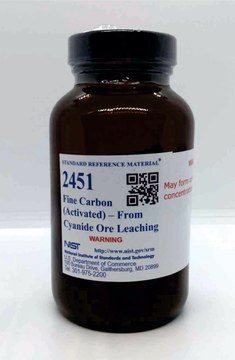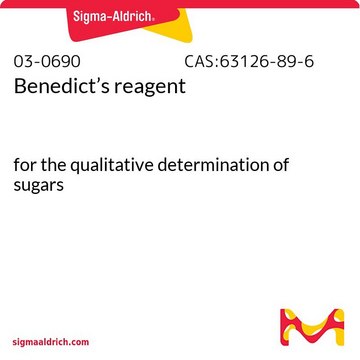01-1410
Activated carbon
SAJ first grade
Synonym(s):
Activated charcoal, Charcoal activated
Sign Into View Organizational & Contract Pricing
All Photos(1)
About This Item
Empirical Formula (Hill Notation):
C
CAS Number:
Molecular Weight:
12.01
EC Number:
MDL number:
UNSPSC Code:
23201100
PubChem Substance ID:
Recommended Products
grade
SAJ first grade
vapor pressure
<0.1 mmHg ( 20 °C)
form
powder, crystals or granules
autoignition temp.
842 °F
availability
available only in Japan
resistivity
1375 μΩ-cm, 20°C (graphite)
mp
3550 °C (lit.)
SMILES string
[C]
InChI
1S/C
InChI key
OKTJSMMVPCPJKN-UHFFFAOYSA-N
Looking for similar products? Visit Product Comparison Guide
Storage Class Code
11 - Combustible Solids
WGK
WGK 3
Flash Point(F)
Not applicable
Flash Point(C)
Not applicable
Regulatory Information
新产品
Choose from one of the most recent versions:
Already Own This Product?
Find documentation for the products that you have recently purchased in the Document Library.
Nathalie Butt et al.
Ecological applications : a publication of the Ecological Society of America, 23(4), 936-943 (2013-07-20)
A typical way to quantify aboveground carbon in forests is to measure tree diameters and use species-specific allometric equations to estimate biomass and carbon stocks. Using "citizen scientists" to collect data that are usually time-consuming and labor-intensive can play a
Elisangela Heiderscheidt et al.
Journal of environmental sciences (China), 25(4), 659-669 (2013-08-09)
The drainage of peatland areas for peat extraction, agriculture or bioenergy requires affordable, simple and reliable treatment methods that can purify waters rich in particulates and dissolved organic carbon. This work focused on the optimisation of chemical purification process for
Abstracts of the 9th International Conference On Homocysteine and One-Carbon Metabolism - HCY2013. Dublin, Ireland. September 8-12, 2013.
Journal of inherited metabolic disease, 36 Suppl 1, S1-54 (2013-07-25)
Guofeng Shen et al.
Journal of environmental sciences (China), 25(3), 511-519 (2013-08-08)
The uncertainty in emission estimation is strongly associated with the variation in emission factor (EF), which could be influenced by a variety of factors such as fuel properties, stove type, fire management and even methods used in measurements. The impacts
Christopher M Gough et al.
Ecological applications : a publication of the Ecological Society of America, 23(5), 1202-1215 (2013-08-24)
Carbon (C) uptake rates in many forests are sustained, or decline only briefly, following disturbances that partially defoliate the canopy. The mechanisms supporting such functional resistance to moderate forest disturbance are largely unknown. We used a large-scale experiment, in which
Our team of scientists has experience in all areas of research including Life Science, Material Science, Chemical Synthesis, Chromatography, Analytical and many others.
Contact Technical Service





